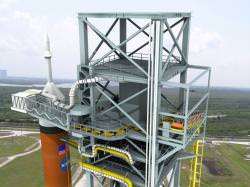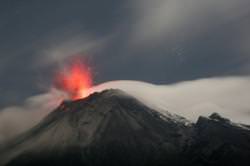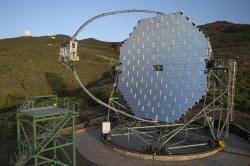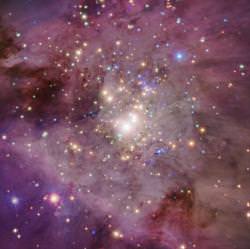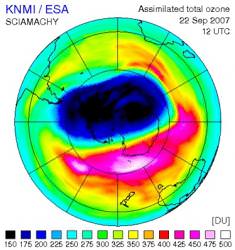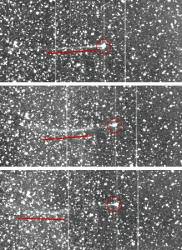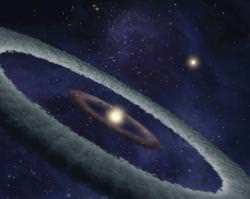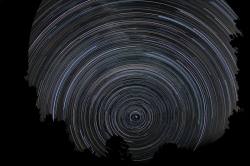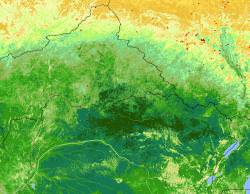Let’s hope that nothing ever goes wrong while astronauts are preparing to launch on their Ares 1 rocket – the new vehicle that will replace the space shuttle. But if there is a problem, and the astronauts need to escape right now, they’ll have a fun ride down – on the 3rd tallest roller coaster in the world. It’s called the Orion Emergency Egress System, but really, it’s a roller coaster, designed to get the astronauts away from the vehicle and into a protective bunker in moments.
Take a good look at the image that goes along with this story. See the bright yellow rails over on the right hand side of the image, dropping straight down from the gray platform. That’s the escape system. You’ll note it goes straight down.
The purpose of the Orion Emergency Egress System is to get astronauts and support personnel away from the Ares 1 vehicle, and into a safety bunker within 4 minutes. The solution that NASA has come up with should be perfect, carrying astronauts and workers down away from the rocket, right to the bunker’s door.
For previous launch vehicles, NASA had cables near the door to the launch vehicle. If there was a problem, people could enter a basket that slides down a cable to an area near the bunker. The problem was that it was very difficult to get incapacitated people into the basket and down to the safety of the bunker. With the new egress system, healthy workers can just put the wounded in seats and let them ride down to safety.
NASA called in the world’s roller coaster designers to help them create the system. In fact, from a height of 116 metres (380 feet), the Orion Emergency Egress System would be the third tallest roller coaster in the world, after the Kingda Ka at Six Flags Great Adventure in Jackson, New Jersey, and the Top Thrill Dragster at Cedar Point in Sandusky, Ohio.
Original Source: NASA News Release

